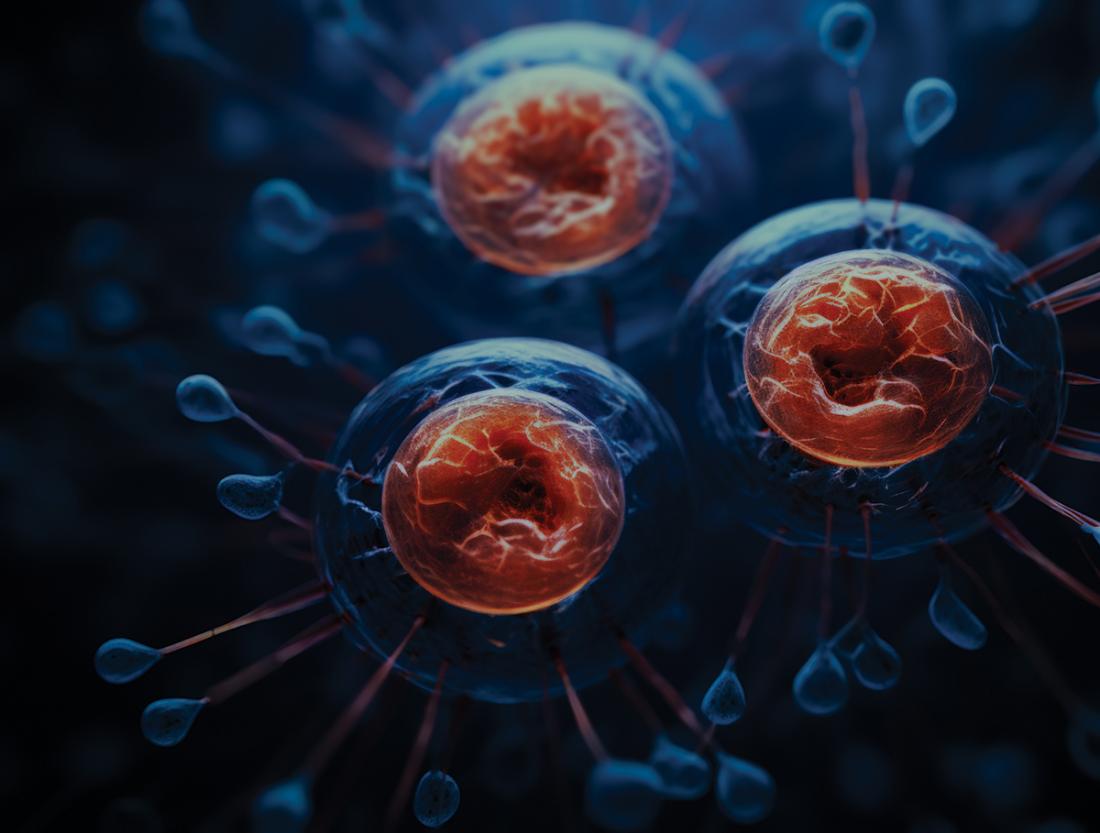This story is featured in the Asia Research News 2024 magazine. If you would like to receive regular research news, join our growing community.
Get the news in your inbox
By giving living cells a “nano-poke” and monitoring the resulting changes in the intracellular environment, researchers have gotten their first glimpse of how whole cells respond to external mechanical pressure.
A team led by scientists from the National Institute for Materials Science (NIMS) in Tsukuba, Japan, used a technique called atomic force microscopy to apply force across the surface of various cells. The method uses nanoscale probes, with tips just a few billionths of a metre in size, to measure and map how force gets distributed across the cellular surface and throughout the cell. The researchers used machine learning to analyse and model the forces they measured. They also used fixing and staining techniques to study how the force distortion affected the cell’s internal structures and the microtubules and actin filaments that make up its “skeleton”. The study was published in the journal Science and Technology of Advanced Materials.
“Cells are smart materials that can adapt to various chemical and mechanical stimuli from their surroundings,” says Jun Nakanishi, one of the corresponding authors of the study and the leader of the Mechanobiology Group at NIMS. That ability to adapt relies on rapid feedback mechanisms to keep the cell intact and healthy, and there’s growing evidence that the failure of this cellular response underlies a range of ailments, including diabetes, Parkinson’s disease, heart attacks, and cancer.
So far, studies of these cellular responses have been limited by the techniques used – for example, some methods require that cells be pre-fitted with sensors, so they can only measure a small part of the response. “We invented a unique way to ‘touch’ a cell with nanoscale ‘hand’, so that the force distribution over a complete cell could be mapped with nanometre resolution,” says Hongxin Wang, who is the first author of the study and Japan Society for the Promotion of Science (JSPS) postdoc in the Mechanobiology Group.
The new technique allowed the study of forces that keep cells in their shape, similar to how the poles and ropes of a camping tent work. This will enable scientists to understand healthy cells from cancer cells, providing a new diagnostic tool based on cellular mechanics.
The study revealed that tensional and compressional forces are distributed across actin fibres and microtubules within the cell to keep its shape, similar to how the poles and ropes of a camping tent work. When the researchers disabled the force-bearing function of actin fibres, they found that the nucleus itself is also involved in counterbalancing external forces, highlighting the role of the internal structure of the nucleus in the cellular stress response.
The research team also compared the responses of healthy and cancerous cells. Cancer cells proved ore resilient to external compression than the healthy cells, and they were less likely to activate cell death in response.
The findings not only illuminate the complex intracellular mechanics of the stress response, but the discovery of different responses in cancer cells could offer a new way to distinguish healthy and cancerous cells – a diagnostic tool based on cellular mechanics.
Hospitals currently use the size, shape, and structure of a cell in diagnosing cancer. However, these features don’t always provide enough information to tell the difference between healthy and diseased cells. “Our findings provide another way of checking cell conditions by measuring force distribution, which could dramatically improve diagnostic accuracy,” says Han Zhang, another corresponding author of the study and the senior researcher of the Electron Microscopy Group at NIMS.
Further information
Dr Jun Nakanishi
[email protected]
National Institute for Materials Science
Dr Han Zhang
[email protected]
National Institute for Materials Science
Dr Hongxin Wang
[email protected]
National Institute for Materials Science
Dr Yasufumi Nakamichi
[email protected]
Science and Technology of Advanced Materials (STAM)
We welcome you to reproduce articles in Asia Research News 2024 provided appropriate credit is given to Asia Research News and the research institutions featured.





